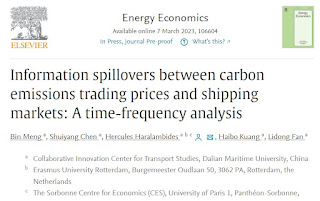In 2005, we had warned the European Commission (see Erasmus Report) that the prohibition of conferences from European trades was a big mistake. Its consequences, we claimed, would be stronger and fewer alliances, i.e., more concentration and opportunities for its abuse. They did not listen. Dressed to kill, hand-in-glove with shippers (the European Shippers' Council), they forbode liner conferences and we have all seen the results of this, which are exactly as we predicted in 2005. But the Commission, it seems, does not learn from its mistakes and is bound to make an even bigger mistake which will lead to mergers, acquisitions and hostile takeovers. In the end, the shipper will pay again through fewer services and heightened unreliability.
The Commission claims that CBER does not
promote competition anymore. It blatantly fails to understand, however, that
more competition was never the intention of CBER. Instead, following the
prohibition of conferences, the Regulation was affording carriers some
'self-regulatory' discretion because, in industries such as liner shipping,
outright competition on marginal cost becomes destructive.
The right step, therefore would have been
better regulatory surveillance, instead of expecting the carrier to prove
himself that he is not an elephant. This is exactly what President Biden asked
FMC to do (better regulatory work) a few months back. Following its review, the
latter (FMC) decreed that there is nothing 'sinister' behind alliances and the
astronomical profits of the covid-19 period were nothing more that the effects
of a supply and demand imbalance. Indeed, if one observes today's precipitous
drop in freight rates, one and only one conclusion can be drawn: even if
carriers had some degree of monopoly power, they have never been able to make
it work.-
HH





